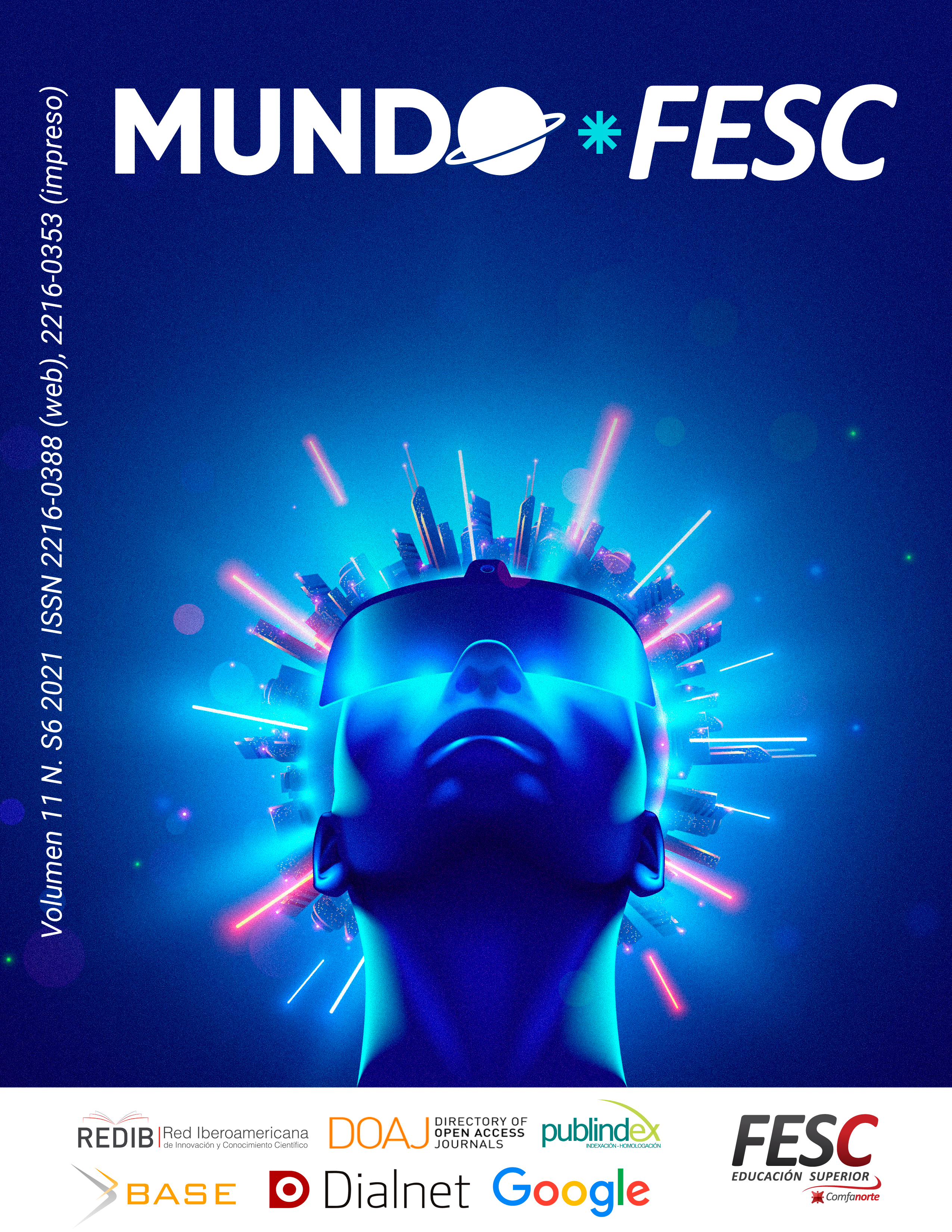Aplicación tecnológica para impulsar el turismo de avistamiento de aves
Keywords:
Birds singing, Spectrum, Smart phones, DFT, FFT, Nature tourismAbstract
Colombia has a great opportunity to implement lucrative and environmentally friendly tourist offers based on bird watching, because this is a country where a large number of species inhabit. With this type of tourism, the development of remote regions and affected by the armed conflict could be promoted. The objective of this work is develop an application for smartphones that facilitate and improve the experience of sighting in inexperienced tourists and encourage this practice in sun and beach tourists. The application has the ability to identify birds from their song. For this, a frequency analysis is carried out to characterize the sound by identifying the lowest frequency, the highest frequency and the four frequencies with the greatest intensity. For identification, the bandwidth of the song and the Euclidean distances between the vector containing the characteristic information of the song and the database with the information of the song of the registered birds are evaluated. The application has an assertiveness in recognition of 79% and a potential for success of the service in its commercialization and use of 68%. It can be concluded that it is possible to develop an application for the recognition of birds using the song, computationally light, efficient and successful that can be executed in devices with low technological features
Downloads
References
V. Quintana, "El turismo de naturaleza: un producto turístico sostenible", Arbor Ciencia, Pensamiento y Cultura, vol. 193, nº 785, pp. 1-14, 2017
T. Donegan, J. Verhelst, T. Ellery, O. Cortés-Herrera y P. Salaman, "Revision of the status of bird species occurring or reported in Colombia 2016 and assessment of BirdLife International’s new parrot taxonomy", Conservación Colombiana, nº 27, pp. 12-36, 2016
Colombia Productiva, «Turismo de Naturaleza, Plan de Negocios,» Mincomercio, Bogota, 2021
N. Ocampo-Peñuela y S. Winton, "Economic and conservation potential of bird-watching tourism in postconflict Colombia", Tropical Conservation Science, vol. 10, nº 1, pp. 1-6, 2017
C. Lee, C. Han y C. Chuang, "Automatic classification of bird species from their sounds using two-dimensional cepstral coefficients", IEEE Transactions on Audio, Speech, and Language Processing, vol. 16, nº 8, pp. 1541-1550, 2008
J. Tanttu, T. Jari y M. Ojanen, "Automatic classification of flight calls of Crossbill species (Loxia spp.)", de Proceedings of the 1st International Conference on Acoustic Communication by Animals, Maryland, 2003
J. Kogan y D. Margoliash, "Automated recognition of bird song elements from continuous recordings using dynamic time warping and hidden Markov models: A comparative study", The Journal of the Acoustical Society of America, vol. 103, nº 4, pp. 2185-2196, 1998
J. González, J. Padrón, I. Barbero, L. Custodio y F. Merchán, "Reconocimiento de canto de aves basado en el análisis de componentes principales del espectrograma", Revista de Iniciación Científica, vol. 5, nº 3, pp. 124-129, 2019.
M. Sukri, U. Fadlilah, S. Saon, M. Som y A. Sidek, "Bird Sound Identification based on Artificial Neural Network", Batu Pahat, 2020
S.-S. Chen y Y. Li, "Automatic Recognition of Bird Songs Using Time-Frequency Texture", de 5th International Conference and Computational Intelligence and Communication Networks, Mathura, 2013.
S. Hsu, C. Lee, P. Chang, C. Han y K. Fan, "Local Wavelet Acoustic Pattern: A Novel Time–Frequency Descriptor for Birdsong Recognition", IEEE Transactions on Multimedia, vol. 20, nº 12, pp. 3187-3199, 2018
L. Delgado y L. Díaz, "Modelos de Desarrollo de Software", Revista Cubana de Ciencias Informáticas, vol. 15, nº 1, pp. 37-51, 2021
M. Gasca, L. Camargo y B. Medina, "Metodología para el desarrollo de aplicaciones móviles", Tecnura, vol. 18, nº 40, pp. 20-35, 2014
K. Wasilewski y W. Zabierowski, "A Comparison of Java, Flutter and Kotlin/Native Technologies for Sensor Data-Driven Applications", Sensors, vol. 21, nº 10, p. 3324, 2021
ECMA, "Standard ECMA-404, The JSON Data Interchange Syntax", Industry association for standardizing information and communication systems, Switzerland, 2017
Instituto Humboldt, "Descarga en tu celular los sonidos de la Biodiversidad colombiana", 7 6 2020. [En línea]. http://www.humboldt.org.co/es/noticias/actualidad/item/107-descarga-en-tu-celular-los-sonidos-de-la-biodiversidad-colombiana
R. Chápuli, "¿Hay música en el canto de las aves?", Encuentros en la Biología, vol. 11, nº 165, pp. 21-25, 2018
Google, "Android Studio 2020.3.1", Google, Mountain View, 2020
T. Ahonen, J. Barret y P. Golding, Services for UMTS, creating killer applications in 3G, West Sussex: John Wiley & Sons, 2002
Audacity Team, "Audacity Version: 3.1.2", Musecy SM LTD, Pittsburgh, 2021.
Xeno-canto Foundation, "Compartiendo cantos de aves de todo el mundo", 1 6 2021. [En línea]. https://www.xeno-canto.org/about/xeno-canto




